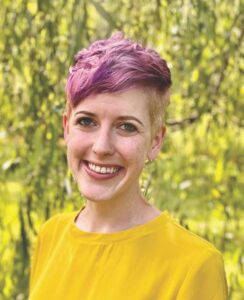 This month’s Author/Illustrator interview is with queer, nonbinary storyteller Anne Appert “who uses whimsy and humor to inspire and connect with readers on their own journeys towards becoming their most authentic selves.” In all of Anne’s social media, I find variations of the following: “nonbinary artist, author, aunt, alliterator.” Such splendid use of similar sounds, wouldn’t you say?
This month’s Author/Illustrator interview is with queer, nonbinary storyteller Anne Appert “who uses whimsy and humor to inspire and connect with readers on their own journeys towards becoming their most authentic selves.” In all of Anne’s social media, I find variations of the following: “nonbinary artist, author, aunt, alliterator.” Such splendid use of similar sounds, wouldn’t you say?
Need more about Anne? There’s this, too. “When not creating stories and art for children, I like to dye my hair every color of the rainbow, make stickers, and teach myself how to roller skate.”
Anne’s the author/illustrator for Blob (2021) and the forthcoming picture book What If You Wish? (March 5, 2024), both from HarperCollins. Anne’s also the Illustrator Coördinator for the NJ chapter of SCBWI and an adjunct professor at Montclair State University where they teach digital painting and children’s book illustration.
Let’s get right to the interview to learn even more about Anne!
RVC: Growing up in New Jersey, how did your surroundings influence your creativity and storytelling?
AA: While I grew up in a very suburban area of New Jersey, I had a large yard and a wooded area with a stream that became a stage for elaborate games of pretend with my twin and next-door neighbor/best friend. My entire family is creative in some way: my mom is a skilled knitter and sewer and my dad is a musician and teacher. My siblings and I were always encouraged to use creativity and imagination in everything we did. For me and my twin, every craft, LEGO building, board game, and blanket tent led to games of pretend. In a way, my imaginative play was just the beginning of my journey as a storyteller, and I never gave it up (one could argue that I never grew up). Now I try to capture that feeling of whimsy and possibility from childhood in both my art and my words.
RVC: Is there a book/reading experience from that time that really stands out in your mind?
AA: My parents are vociferous readers, and my siblings and I were all infected with this love of reading as well. My childhood was filled with trips to the library, used bookstores, and listening to books on tape in the car. I spent many nights falling asleep reading a book under the covers (and broke several pairs of glasses this way, much to my parents’ chagrin).
RVC: Yep, I’ve totally been there.
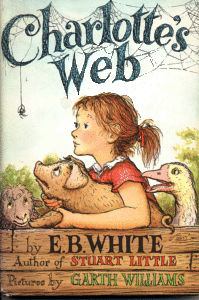 AA: Reading was such a part of my family culture that it’s hard to pick just one experience; however, there are two routines that stand out to me when I think about my family and reading. My dad would make up bedtime stories to help us fall asleep, often building on the story from the night before to create wonderful worlds of characters. (I still would love to have Bobo the Bear in one of my own books.) My mom would read us chapters of books like Charlotte’s Web, and, as we got older, read the books we read to chat about them with us.
AA: Reading was such a part of my family culture that it’s hard to pick just one experience; however, there are two routines that stand out to me when I think about my family and reading. My dad would make up bedtime stories to help us fall asleep, often building on the story from the night before to create wonderful worlds of characters. (I still would love to have Bobo the Bear in one of my own books.) My mom would read us chapters of books like Charlotte’s Web, and, as we got older, read the books we read to chat about them with us.
RVC: Why did you choose to attend FIT (Fashion Institute of Technology)? What was your intended career path post-graduation?
AA: The way I chose FIT was a bit circuitous, much like publishing! My high school did not have an art program, but I liked drawing, and I was good at math, so I planned on becoming an architect. When I started to receive brochures from schools with architecture programs, I stumbled upon one that also listed Illustration as a course of study. I hadn’t realized one could study illustration, and after seeing this, immediately decided I wanted to go to school to become a picture book author/illustrator. I went to a portfolio review day where art schools from all over the East Coast sent faculty to look at portfolios, which was where I decided to apply to FIT. 17-year-old me thought it was VERY COOL that there was a fashion school close to me, the faculty were kind and encouraging, and, as part of the SUNY (State University of New York) system, it was affordable.
Additionally, while looking at colleges, my older sister’s friend told me not to bother applying to schools other than my local state school, and I wanted to prove them wrong. Because I knew I wanted to make books, I took every writing class I could at FIT and have a minor in English. After graduation, I attended conferences and learned more about the industry while also working as a draftsperson in an engineer’s office, a freelance designer for a home goods company, and at the FIT Library. Now I work as an author/illustrator and also as an adjunct professor at Montclair State University.
RVC: That’s a win, for sure. What key moment or experience at FIT stands out for you?
AA: I’m not sure I can pick just one! (You’ll notice this is a recurring thing for me.) College was such a formative experience for me as a person and an artist. However, I’ll stick with two. My first class was at 8 am on Mondays and I was terrified because I had never taken an actual art class. The professor was a tall, eccentric presence with very strong opinions about ART. Halfway through the semester we had to show him our work from his class. He flipped through my art quickly, scoffing, and with disgust said, “There is NOTHING here for me.” Rather than get discouraged, I decided to prove him wrong. (I really like to prove people wrong about me!)
RVC: Good for you!
AA: When I was a third-year student, my history of illustration professor was kind and passionate about both illustration and teaching. He pushed me to try more things with my art than I ever had, to think more deeply about the decisions I was making and encouraged me to apply for an internship. While I didn’t get the internship, he gave me a copy of the letter of recommendation he wrote for me. For the first time, I realized that someone wholeheartedly believed I could and would be a successful illustrator. I went from feeling like a constant underdog and imposter to believing in myself. When I’m feeling discouraged, I take out that letter to remind myself I can do this.
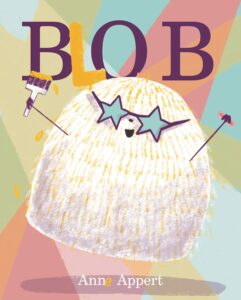 RVC: I love professors like that. Now, let’s talk about your first author/illustrator picture book, Blob. What’s the story behind that story?
RVC: I love professors like that. Now, let’s talk about your first author/illustrator picture book, Blob. What’s the story behind that story?
AA: Oh, I love telling this story! Blob started out of spite. (Are you sensing a theme with my motivation yet?)
RVC: It’s becoming clearer as we go. 🙂
AA: I had been with my agent for about a year, putting together ideas, making illustration samples and dummies, and getting a lot of no’s. Most of my illustrations had animal characters, which people kept calling the wrong things (e.g. someone thought a skunk was a badger, a squirrel was a cat, etc.). Out of frustration, I said to a friend: “That’s it. Since no one can tell what I’m drawing, I’m just going to draw a blob.” So, I did. After an overwhelmingly positive reception on social media, I decided to write Blob’s story. We sent it on submission, got a lot of no’s again, including one from HarperCollins.
RVC: This is a great story. What happened next?
AA: A couple months later, I did a portfolio review through an organization called the Children’s Book Illustrator group in NYC. I put some Blob illustrations in my portfolio and met with a different editor from HarperCollins. This editor loved Blob and asked if I had a story for them. I said yes, sent the dummy the next day, and the next week I got a call from my agent that HarperCollins had made an offer!
Though Blob is a humorous book, a lot of Serious Me also ended up in there. As a twin and part of a big family, people often put no effort into learning my name or who I was when I was a kid. I also experienced a lot of anxiety over the question “Who do you want to be when you grow up?” These themes snuck into Blob’s journey without asking. After the book was done and off to the printers, my editor asked me to write a marketing letter discussing my why behind creating Blob. This exercise was the final step in my realization that I am nonbinary, and Blob’s journey was my own questioning journey.
RVC: What’s the most valuable lesson you learned from making that book?
AA: I would not be me if I stuck to one so here are my top 3:
- A no in publishing is often just a no for now. Don’t give up on the projects you believe in!
- Though we write and illustrate picture books for children, creating them is often a powerful part of a storyteller’s own journey of self discovery.
- Always make your purples brighter than you think you need to.
RVC: Thanks for overdelivering–OPB readers appreciate that. Now, let’s talk about process. What are the steps in how you go from idea to manuscript?
AA: I am an idea generator. I constantly think of new ideas and get excited about them (just ask my partner or any of my critique partners–I am annoyingly enthusiastic about new ideas). The process varies widely for me depending on the project. To generalize, my process looks something like this:
- Get idea. Get super excited about idea. Share idea with anyone who will listen. Don’t pay any attention to their reaction.
- Let idea simmer. Do more ideas keep coming to build on this idea? Is a theme emerging? Has the character introduced themselves to me? Make random notes in my phone, in notebooks, on post its, in my sketchbook, whatever I am holding.
- Gather notes together. What kind of foundation do I have?
- For picture books: Draft once the beginning and ending sentences come into my head. For longer projects: Outline once the beginning and ending scenes come into my head. If it’s a picture book: Create folder for drafts in google drive. For longer projects: Set up notebook specifically for project to gather notes and feedback in.
- Write solid draft. Send to critique group for feedback. Let feedback simmer. Get bored of the project and move on to a different one.
- Something reminds me of idea. Revisit feedback and revise. Send it to a different critique group/writing partner for fresh eyes.
- Edit and send to my agent for feedback.
- Start planning the dummy: plan all the page breaks. Write out what I intend the art to be on each page. Set up pages for dummy in Procreate and transfer texts/notes to correct pages.
- Sketch!
- Send back to agent for feedback. Pick 3 pages to make into final art.
- Overthink and make 6 different cover sketches. Stick with the first idea I had.
- Put it all together. Agonize over a pitch. Get impatient and send it to my agent.
- Agent sends project out.
- Cross all fingers. Refresh email. Move on to the other 10 projects I’ve started already.
- Repeat.
RVC: That’s a fantastically detailed accounting of your process which I really appreciate you explaining so clearly. What’s the hardest part of the process?
AA: I have a really hard time finishing projects if I’m the one setting deadlines for myself. I LOVE new ideas, so I get distracted by the potential of a new project ALL the time. I’m not kidding when I say I have about 10 projects started, and that may be an underestimation. If someone else gives me a deadline, that project will get finished! Picture book dummies are a lot of work and so much of the middle part of the process gets boring for me.
RVC: Let’s talk about community. You’ve been involved with SCBWI since 2012. How has this organization shaped your career?
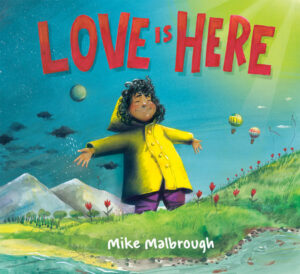 AA: I would not be where I am without SCBWI. Once I became active in the organization in about 2015, I met my first critique partners and learned all about the industry. At an NJ SCBWI event I met author/illustrator Mike Malbrough, who mentored me through creating a query ready portfolio and dummy. At another I met my good friend, author/illustrator Mike Ciccotello, who got me started using
AA: I would not be where I am without SCBWI. Once I became active in the organization in about 2015, I met my first critique partners and learned all about the industry. At an NJ SCBWI event I met author/illustrator Mike Malbrough, who mentored me through creating a query ready portfolio and dummy. At another I met my good friend, author/illustrator Mike Ciccotello, who got me started using 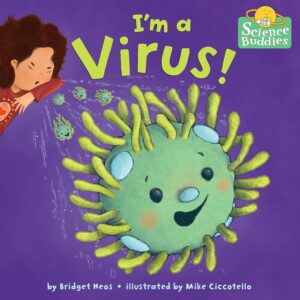 Procreate which unlocked my illustrative voice. An agent at these events gave me invaluable advice on my portfolio and dummies through paid critique opportunities over several years, then introduced me to my first agent.
Procreate which unlocked my illustrative voice. An agent at these events gave me invaluable advice on my portfolio and dummies through paid critique opportunities over several years, then introduced me to my first agent.
Through SCBWI, I met many writers and illustrators who are now some of my closest friends. I continue to meet new critique partners and receive invaluable feedback from industry professionals at SCBWI events. At the NY SCBWI conference last winter, I connected with the editor who just hired me to illustrate my first chapter book series. And finally, beyond my career, I met my partner at an SCBWI conference, and I feel so lucky to have such a creative, supportive person in my life. (And not just because they HAVE to listen to all my ideas now.)
RVC: When’s the best time for an aspiring picture book creator to join SCBWI?
AA: When they can! I believe SCBWI is especially helpful for those at the start of their careers, who are looking to learn more about craft and create their own connections with like-minded storytellers. SCBWI, like many organizations, is what you make of it, and I’ve always found it to be a great space to find your community.
RVC: What’s an SCBWI resource that too few people take advantage of?
AA: Too few people take advantage of what their local chapter is doing! The regional chapters of SCBWI are run by wonderful volunteers who try very hard to provide programming for their members. Additionally, many of the smaller regions have continued to provide virtual programming, most of which you can register for even if it’s not your chapter! I’ve gone to several wonderful webinars through chapters I would never have been able to travel to and attend their events.
RVC: Sticking with the theme of community…are there other communities you would recommend to aspiring and early-career picture book creators?
AA: If you are local to NYC, I highly recommend that illustrators join the Children’s Book Illustrator Group. Since the pandemic, all their programming is virtual, so it’s possible that you can join even if you are not local. They do several webinars throughout the year with industry professionals that are specifically for illustrators.
I also highly recommend the Highlights Foundation. They have been instrumental in me getting any creative work done in the last 3 years. They have amazing online classes for people at any stage of their writing careers, including both longer format classes and mini two-night intensives. Additionally, they run workshops and in-community retreats in person at their campus in Pennsylvania. If you want some focused writing/illustrating time where you don’t have to worry about where to sleep or what to eat, you can also do your own personal retreat there! I’ve met great writers and illustrators who have become critique partners, cheerleaders, and friends through classes and visits at the Highlights Foundation.
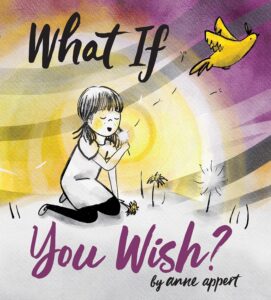 RVC: You’ve got another book coming out in March 2024. What’s the elevator pitch for What If You Wish?
RVC: You’ve got another book coming out in March 2024. What’s the elevator pitch for What If You Wish?
AA: How about the publishing copy?
A gentle child embarks on a magical journey and transforms their worries into wonder by simply asking “What if?”
When a spring breeze blows,
a quiet promise whispers,
What if?
What if you close your eyes and
make a wish?
In this sweet and inspiring book by Anne Appert (Blob), one child learns the true power of positive thinking, perseverance, and wonder.
RVC: Sure, that works splendidly. Now, how was the process of creating this book different from Blob?
AA: The two processes were not even remotely the same. Why make this easier for myself? The contract for Blob was for two books, and What If You Wish? developed with more initial input and collaboration from my editor. When I signed, she mentioned that she wanted to explore doing my second book in an ink and watercolor style in which I had done some art for my Instagram account in 2019. I’ve been working digitally for a long time now, so I hoped she would forget this request. She did not. (Illustrators: a prime lesson in “don’t post art in a style you don’t want to work in”)
I wrote two outlines for my editor, and together we picked the stronger idea which we were both excited to work on. The text is lyrical, almost a poem, and there were a lot of emails about word choice for this project. Because color is an important part of the storytelling in this book, I did my dummy sketches in color for both her and my art director.
RVC: Sounds good so far. What happened next?
AA: I panicked. When I first started making art in high school, watercolor was my medium of choice, and remained so through college. As a strictly digital artist since then, I was not confident that painting with watercolor would be like riding a bike. This lack of confidence impeded my ability to start the art, so I taught myself how to create watercolor paintings in Procreate in order to give myself more flexibility. I loved it! While I say not to post art in a style you don’t want to work in, secretly I always dreamed of creating a book with watercolor illustrations. All my favorite childhood artists used pen and watercolor. I am so happy my editor pushed me out of my comfort zone, and now I often work in digital watercolor.
RVC: What’s the most important thing people should know or understand about What If You Wish?
AA: If you are a fan of Blob, What If You Wish? is VERY different in style, both in the text and in the art. I pushed myself during this project, mentally, creatively and artistically, and I’m proud of what I made. In a way, having two books with such very different approaches is very indicative of who I am as a person, constantly changing my creative approach and trying new things. I hope that those who are familiar with my work are encouraged to believe that they don’t have to fit in any one box either. I wish that creatives, both the kid kind and the adult kind, can read this book and reconnect with their sense of wonder and possibility.
RVC: I note that you offer a variety of critique and story development sessions via your website. What’s your superpower in terms of helping other creatives?
AA: As I said earlier, I am an idea generator. I am constantly thinking of new ways to approach things or look at things. I do this not only with my own work, but with the work of those who ask me for help. Because of this, I’m able to get to the heart of the story a creator is trying to tell with their words and/or pictures, or I’m able to ask questions to enable them to reach that answer themselves. Then, either by working together or by asking the writer or illustrator some generative questions, I help them create the framework in their story and make choices that allow this heart to shine as bright as possible.
RVC: Looking back, is there anything in your career you would have done differently?
AA: Hmmm. I think we can trap ourselves thinking “if I had done something this way instead…” or “what if I had chosen this other path …” The fact is, I didn’t! Without the choices I did make, I truly believe I would not have ended up where I am today, and I’m pretty excited and hopeful about my career. Instead, I’m going to continue keeping my “what ifs?” In the present and look forward to the future they create.
RVC: That’s a fine answer!
AA: One thing I would have done differently as a student (and since, as creatives, most of us are constantly looking to learn more): I would have taken more advantage of the knowledge of my professors and my teachers. Feel my fear and ask questions anyway.
RVC: Well, that’s another fine answer.
AA: Okay, fine. Figuring out I had ADHD and how that informs the way I work MIGHT have come in handy a little earlier in my career.
RVC: Hah, leave it to you to go from no answers to three.
AA: Happy to help!
RVC: If you had to summarize the most important thing you’ve learned about making picture books, what would it be?
AA: By now you KNOW I’m going to give you more than one answer.
- Creating words and pictures for kids isn’t always going to be fun. Sometimes it’s really hard. Sometimes it REALLY SUCKS. Sometimes you’ll wonder, what if I just give up? It’s okay to feel this way.
- Also, have fun! 🙂 Pursue the ideas that excite you. It’s okay if you are writing just for you. Forget about writing a book with a message! You’ll find writing and illustrating has a sneaky way of showing up with a message anyway. Once it does, you can tease it out even more!
- Sometimes bad ideas are good. Sometimes good ideas are bad. SPOILER: ideas are just ideas. I let myself get excited about ALL of them. I will likely only pursue a few. Because guess what? There will also always be more ideas.
But most importantly: Kids are SMART. They feel BIG feelings. They make seemingly impossible connections. Don’t dumb down your art or writing for them. They will know. They will ALWAYS know. Instead, access your inner child and see what happens.
RVC: Since COVID, I’ve been asking a question about health and wellness in each interview. Here’s yours. How do you defeat negativity, either coming from yourself or the outside world?
AA: Oof. Read my next book What If You Wish? To find out!
RVC: I’m hoping the readers will!
AA: Okay, commercial over. I struggle a lot with anxiety and thus negativity from myself is a bit harder to overcome. I tend to spiral. To be completely honest, I handled this during COVID by disengaging a lot. (Animal Crossing anyone? Stardew Valley–also SUPER fun.) However, I find therapy an incredible resource, as well as trying to stay connected to those I know care about me. Journaling helps too, when I remember to do it. I also found I REALLY enjoy making stickers, so finding a creative outlet that is kidlit adjacent but not book making has been wonderful.
With negativity coming from the world, I’ve been trying to stay informed as much as my mental health allows and then engaging where I can by amplifying informed voices on social media, helping financially where I can, and working to become more informed myself.
One thing I’ve learned about myself is that, in addition to loving ideas, I love encouraging, nurturing, and enabling other creatives in their pursuits as much as possible. (I say yes too often!) Giving back is my small way of fighting against negativity. Within publishing, I support efforts to increase diversity and inclusion wherever I can, again both by amplifying efforts and financially where possible. I also donate my time by offering critiques through various kidlit auctions and fundraising efforts. Last summer, I was able to give back by mentoring two trans picture book illustrators through the #PBRising Stars mentorship program which was such a blast. I learned so much and made even more connections that I will cherish in my career.
In short, the opposite of disengaging is what helps me defeat negativity in all areas of my life. Funny how life works.
Professionally, I defeat negativity by being incredibly spiteful. You’ve probably picked up on that.
RVC: Fantastic answer. Let’s wrap up this part of the interview with a glimpse into the future. Beyond the forthcoming 2024 picture book, what’s next for Anne Appert?
AA: ALL THE THINGS! At least, that’s what I’m hoping. Publisher’s Weekly just announced my first chapter book illustration project, a series called Zoomi & Zoe written by author extraordinaire Corey Ann Haydu and published by Quirk Books, coming out in 2025! I am hoping to do more collaborative projects in the future, and I am happy to start with this one. I currently have about a gazillion projects in various stages of development: a heap ton of picture books in progress, a pile of early reader graphic novels simmering, a couple middle grade graphic novels bubbling, even a novel in verse project! (Have I mentioned yet how much my brain loves ideas? NO? Shocking.)
I am manifesting finished projects! Then hoping they find homes in the world. I’ve discovered I really like teaching aspiring artists and writers, so I hope to do even more teaching and speaking in the future. I am planting my what-ifs, and looking forward to seeing what they bloom into. And who knows? Maybe there’s something even my brain hasn’t thought of yet! I look forward to being delightfully surprised.
RVC: Okay, Anne. It’s now time for the much ballyhooed, always exciting, never equaled LIGHTNING ROUND. Zippy zoomy questions followed by zappy cracky answers, please. Are you revved up and ready to respond to this request?
AA: As an over thinker, absolutely not. So let’s do this!
RVC: If you could only have one app on your phone, it’d be…
AA: Spotify.
RVC: What’s the most ridiculous thing you’ve argued with someone about?
AA: The best way to spell Anne. (OBVIOUSLY it’s with an “E”)
RVC: What word do you always mispell misspel missppell get wrong?
AA: Necccesary. Necesarry. Necessary! (Or really any word with some combination of same sound c’s and s’s)
RVC: You’re having a dinner party with three picture book creators. Who gets an invite? (Bonus points for a detailed menu!)
AA: Because I was not given parameters on if they needed to be living, here is my invite list that includes both past and present picture book creators:
- Gyo Fujikawa. She illustrated the version of The Night Before Christmas I grew up with
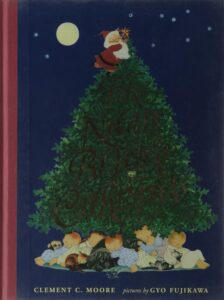 and I adore how she illustrates children. Because of this, we’d need to have sugar plums. (I highly recommend looking up her work! Additionally, Kyo Maclear wrote and Julie Morstad illustrated a lovely picture book biography about her called It Began With A Page: How Gyo Fujikawa Drew The Way)
and I adore how she illustrates children. Because of this, we’d need to have sugar plums. (I highly recommend looking up her work! Additionally, Kyo Maclear wrote and Julie Morstad illustrated a lovely picture book biography about her called It Began With A Page: How Gyo Fujikawa Drew The Way) - Sophie Blackall. I had the immense privilege of visiting her writing/illustrating retreat center, Milkwood, this summer. I love her work and would happily spend much more time talking with her about books and process and life. We would need to have cake, of course.
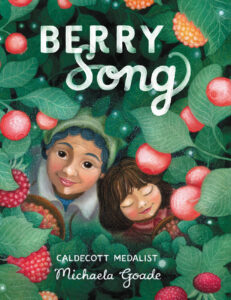 Michaela Goade. Her illustrations are gorgeous and I would love to pick her brain about her approach using mixed media. In honor of her Caldecott honor author/illustrator debut, Berry Song, we would need to have wild berries. Perhaps I can add some homemade whip cream.
Michaela Goade. Her illustrations are gorgeous and I would love to pick her brain about her approach using mixed media. In honor of her Caldecott honor author/illustrator debut, Berry Song, we would need to have wild berries. Perhaps I can add some homemade whip cream.
OK OK. I have a sweet tooth. This is a dessert party, not a dinner party.
I am using incredible restraint to follow the rules and not add at least 3 more people to this list. There are just so many amazing people working in kidlit!
RVC: What’s a recent terrific author/illustrator picture book that didn’t get enough attention?
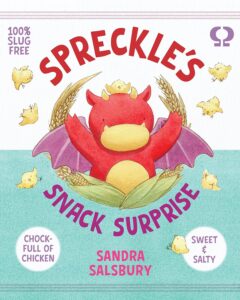 AA: Sandra Salisbury’s Spreckle’s Snack Surprise! The endpapers are particularly fun.
AA: Sandra Salisbury’s Spreckle’s Snack Surprise! The endpapers are particularly fun.
RVC: Three words that describe your picture-book-making journey.
AA: Fickle, Frustrating, Fabulously Fantastic!
RVC: Thanks so much, Anne!
AA: Thank YOU, Ryan!

